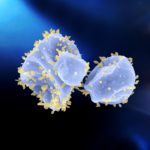Link to Pubmed [PMID] – 23356326
Biochem. Soc. Trans. 2013 Feb;41(1):443-50
Archaeal viruses, especially viruses that infect hyperthermophilic archaea of the phylum Crenarchaeota, constitute one of the least understood parts of the virosphere. However, owing to recent substantial research efforts by several groups, archaeal viruses are starting to gradually reveal their secrets. In the present review, we summarize the current knowledge on one of the emerging model systems for studies on crenarchaeal viruses, the Rudiviridae. We discuss the recent advances towards understanding the function and structure of the proteins encoded by the rudivirus genomes, their role in the virus life cycle, and outline the directions for further research on this model system. In addition, a revised genome annotation of SIRV2 (Sulfolobus islandicus rod-shaped virus 2) is presented. Future studies on archaeal viruses, combined with the knowledge on viruses of bacteria and eukaryotes, should lead to a better global understanding of the diversity and evolution of virus-host interactions in the viral world.



